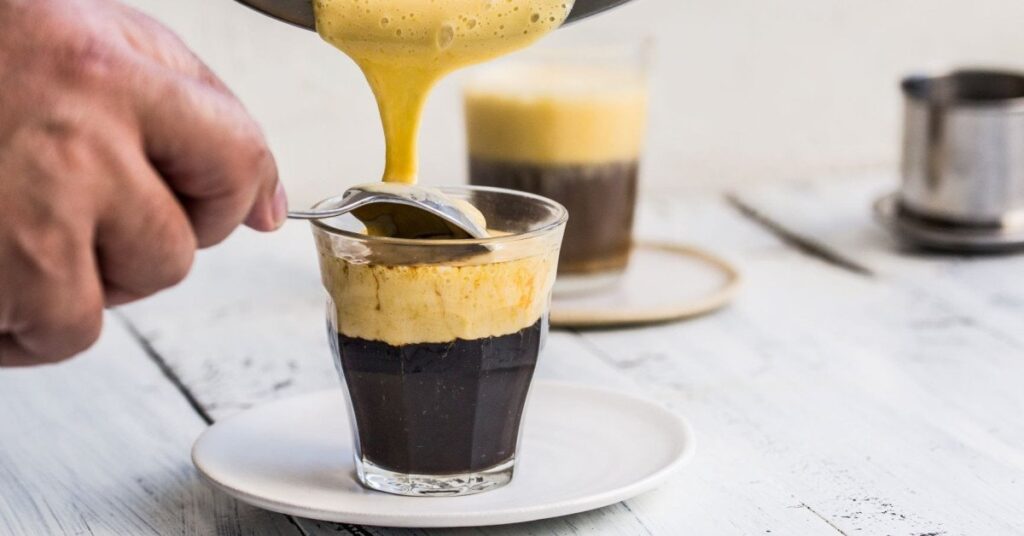A World of Coffee: Exploring Global Brews and Traditions
Coffee is more than just a morning necessity—it’s a cultural cornerstone that varies dramatically across the globe. From the birthplace of coffee in Ethiopia to the innovative coffee scenes of Japan and Australia, each region has developed unique traditions, brewing methods, and rituals around this beloved beverage. Join us as we travel the world through the lens of coffee, exploring how different cultures have embraced and transformed the humble coffee bean into something uniquely their own.
The Origins of Coffee and Key Growing Regions
The story of coffee begins in Ethiopia, where legend tells of a goat herder named Kaldi who discovered coffee after noticing how energetic his goats became after eating certain berries. Today, Ethiopia remains not only the birthplace of coffee but also home to some of the most distinctive and celebrated coffee varieties in the world. Ethiopian coffee ceremonies are elaborate social rituals that can last for hours, with beans roasted, ground, and brewed fresh in the presence of guests.
From Ethiopia, coffee spread throughout the world, finding ideal growing conditions in what’s now known as the “Coffee Belt”—the region between the Tropics of Cancer and Capricorn. This area encompasses diverse growing regions that produce distinctly different flavor profiles:
In Latin America, Colombian coffee is prized for its mild, well-balanced flavor with caramel sweetness, while Brazilian beans often offer nutty, chocolate notes with low acidity. Guatemalan coffee, grown at high altitudes, delivers complex flavors with floral and chocolate undertones.
African coffees beyond Ethiopia are equally remarkable. Kenyan beans are known for their bright acidity and wine-like qualities, while Tanzanian peaberry coffee offers a fuller body with notes of black currant and chocolate.
Asia contributes significantly to global coffee production with unique profiles. Indonesian coffees like Sumatran are earthy and full-bodied, while Java beans are cleaner with subtle sweetness. Vietnam has emerged as the world’s second-largest coffee producer, specializing in robusta beans that deliver a strong, bold cup with higher caffeine content. India’s unique monsooned Malabar offers low acidity and a distinctive spicy quality resulting from exposure to monsoon winds.
Coffee Preparation Methods Around the World
The journey from bean to cup varies dramatically across cultures, with each method highlighting different aspects of coffee’s complex flavor profile.
Espresso-Based Drinks: The Italian Influence
No exploration of coffee culture would be complete without acknowledging Italy’s transformative contribution: the espresso. This concentrated shot of coffee, extracted under pressure, forms the foundation of countless beloved drinks, from the creamy cappuccino to the precisely layered macchiato.
Italian café culture revolves around the espresso bar, where patrons often enjoy their coffee standing up during brief but meaningful social interactions. The Italian approach to coffee emphasizes quality, tradition, and the social aspect of coffee consumption—a quick espresso at the bar is not just about caffeine but about connection.
Traditional Brewed & Filtered Coffee Methods
Turkish coffee, prevalent throughout Turkey, the Middle East, and parts of Eastern Europe, involves brewing ultra-finely ground coffee with water (and often sugar) in a special pot called a cezve or ibrik. The result is a thick, unfiltered coffee often served with a glass of water and sweet treats like Turkish delight.
The French press method, popularized in France but enjoyed worldwide, steeps coarsely ground coffee directly in hot water before separating the grounds with a metal mesh filter. This produces a full-bodied cup that retains coffee’s natural oils and robust flavors.

In the United States, drip coffee has dominated for decades. This method, where hot water passes through ground coffee in a filter, produces a clean, consistent cup that can be enjoyed throughout the day. American coffee culture historically emphasized quantity and convenience, though this has evolved significantly with the specialty coffee movement.
Japan’s pour-over method elevates coffee brewing to an art form, focusing on precision and craftsmanship. Water is poured in specific patterns and timings over a paper filter containing the grounds, resulting in a remarkably clean cup that highlights coffee’s subtle flavor notes.
In the United States, drip coffee has dominated for decades.
Unique Coffee Preparations Around the World
Some of the most fascinating coffee traditions emerge when coffee meets local ingredients and customs.
Indonesia’s kopi tubruk takes a more direct approach—coffee grounds are simply placed in a cup, hot water is added, and the mixture is allowed to steep before drinking, with the grounds settling at the bottom. The result is strong, thick, and intensely flavorful.
Mexico’s café de olla brings together coffee, cinnamon, and piloncillo (unrefined cane sugar) in a traditional clay pot, creating a sweet, spiced brew that warms both body and soul. The earthy clay pot is said to impart additional character to the coffee.
In Senegal, café Touba incorporates Selim pepper (Guinea pepper) and sometimes cloves, creating a distinctively spicy coffee that’s become not just a beverage but a cultural symbol for the region.
Coffee Culture and Rituals Around the World
Coffee’s influence extends far beyond taste—it has shaped social customs and daily rhythms across continents.
European Café Culture
Europe boasts some of the world’s most established café traditions. Viennese coffee houses in Austria, recognized by UNESCO as intangible cultural heritage, have functioned as extended living rooms where people read, write, discuss, and create over coffee and cake for centuries.
In Sweden, the concept of “fika” elevates the coffee break to an essential social institution. This daily ritual, involving coffee and usually something sweet, isn’t just about refreshment but about taking time to connect with others and pause from the day’s activities.
Middle Eastern and African Coffee Ceremonies
The Ethiopian coffee ceremony mentioned earlier represents one of the most elaborate coffee rituals worldwide. Beginning with the roasting of green beans over hot coals, followed by grinding and brewing in a traditional clay pot called a jebena, the ceremony emphasizes hospitality and community.
Similarly, in Eritrea, the coffee ceremony (bun) brings people together for conversation and connection, with coffee served in small cups called finjal, often accompanied by popcorn or other snacks.
Asian Coffee Traditions
Japan’s kissaten (traditional coffee houses) offer a uniquely contemplative atmosphere where coffee is served with meticulous attention to detail. These establishments often specialize in specific brewing methods and pair coffee with carefully crafted desserts.
South Korea has witnessed an explosion in café culture over the past decade, with themed cafés and innovative coffee creations becoming social media sensations. Coffee shops in Korea serve as important social spaces for younger generations and showcase a blend of international influence and local innovation.
Vietnamese egg coffee (cà phê trứng) combines strong coffee with egg yolks, sugar, and condensed milk to create a dessert-like drink with a custard-like topping. The contrast between the bitter coffee and the sweet, creamy topping makes for an unforgettable experience

Vietnamese egg coffee pictured above
Latin American Coffee Social Customs
In Brazil, the world’s largest coffee producer, coffee (cafezinho) is often served throughout the day as a symbol of hospitality. Offering coffee to visitors is considered essential good manners in both homes and businesses.
Colombian coffee culture revolves around the tinto, a small black coffee often sweetened with sugar or panela (unrefined cane sugar). Street vendors selling tinto from thermoses are common sights in Colombian cities, making coffee accessible to everyone regardless of social status.
North American Specialty Coffee Movement
While American coffee culture was long dominated by convenience and quantity, the rise of the specialty coffee movement has transformed how many North Americans approach coffee. Third-wave coffee shops emphasize direct trade relationships with farmers, lighter roast profiles that highlight bean origin characteristics, and brewing methods that maximize flavor complexity.
This movement has educated consumers about coffee origins, processing methods, and flavor profiles, creating a more discerning coffee culture that values quality and sustainability over convenience.
Modern Trends and Innovations in Coffee
Coffee continues to evolve as consumer preferences shift and technology advances. The third-wave coffee movement has placed unprecedented emphasis on transparency in sourcing, with many roasters developing direct relationships with farmers and highlighting single-origin offerings.
Sustainability has become a central concern, with increased attention to environmental impacts and fair compensation for producers. Many companies now offer organic, shade-grown, bird-friendly, and fair trade certified coffees that address various ethical and environmental concerns.
Innovation in brewing technology continues to expand coffee possibilities. Nitro coffee—cold brew infused with nitrogen gas—offers a creamy mouthfeel without added dairy. Cold brew itself has revolutionized iced coffee consumption with its smooth, low-acid profile ideal for warmer months.
The explosion of plant-based milk alternatives has further expanded coffee’s reach, making specialty coffee more accessible to those avoiding dairy while creating new flavor combinations and possibilities.
The Universal Language of Coffee
Despite the incredible diversity in how coffee is grown, prepared, and consumed worldwide, its ability to bring people together remains constant. Whether it’s friends meeting at a café in Paris, businesspeople discussing deals over espresso in Milan, families gathering for an Ethiopian coffee ceremony, or baristas and customers chatting at a specialty shop in Portland, coffee creates connections.
As our world becomes increasingly interconnected, coffee cultures continue to influence and inspire each other. Brewing methods once specific to particular regions now appear in cafés worldwide. Baristas in Seoul might perfect Italian espresso techniques while adding uniquely Korean twists. A specialty roaster in London might highlight Ethiopian beans while employing Japanese brewing precision.
This cross-pollination enriches coffee culture globally while preserving the unique traditions that make each coffee-drinking experience special. Coffee remains both distinctly local and universally beloved—a daily ritual that connects us to our own cultural heritage while introducing us to traditions from around the world.

Where beans are sourced, and how they are farmed has become increasingly important in recent years
Experience Global Coffee Traditions at Home
Ready to embark on your own coffee world tour? Our Worldwide Tasting Tray offers a carefully curated selection of coffees from Ethiopia, Colombia, Vietnam, and Indonesia—each with brewing instructions specific to its country of origin. This collection allows you to experience the incredible diversity of global coffee traditions from the comfort of your home.
Whether you’re a curious coffee novice or a seasoned enthusiast, exploring the world through coffee offers a deeper appreciation of this beloved beverage and the cultures that have shaped it. Order your Worldwide Tasting Tray today and begin your global coffee journey with Junospresso.